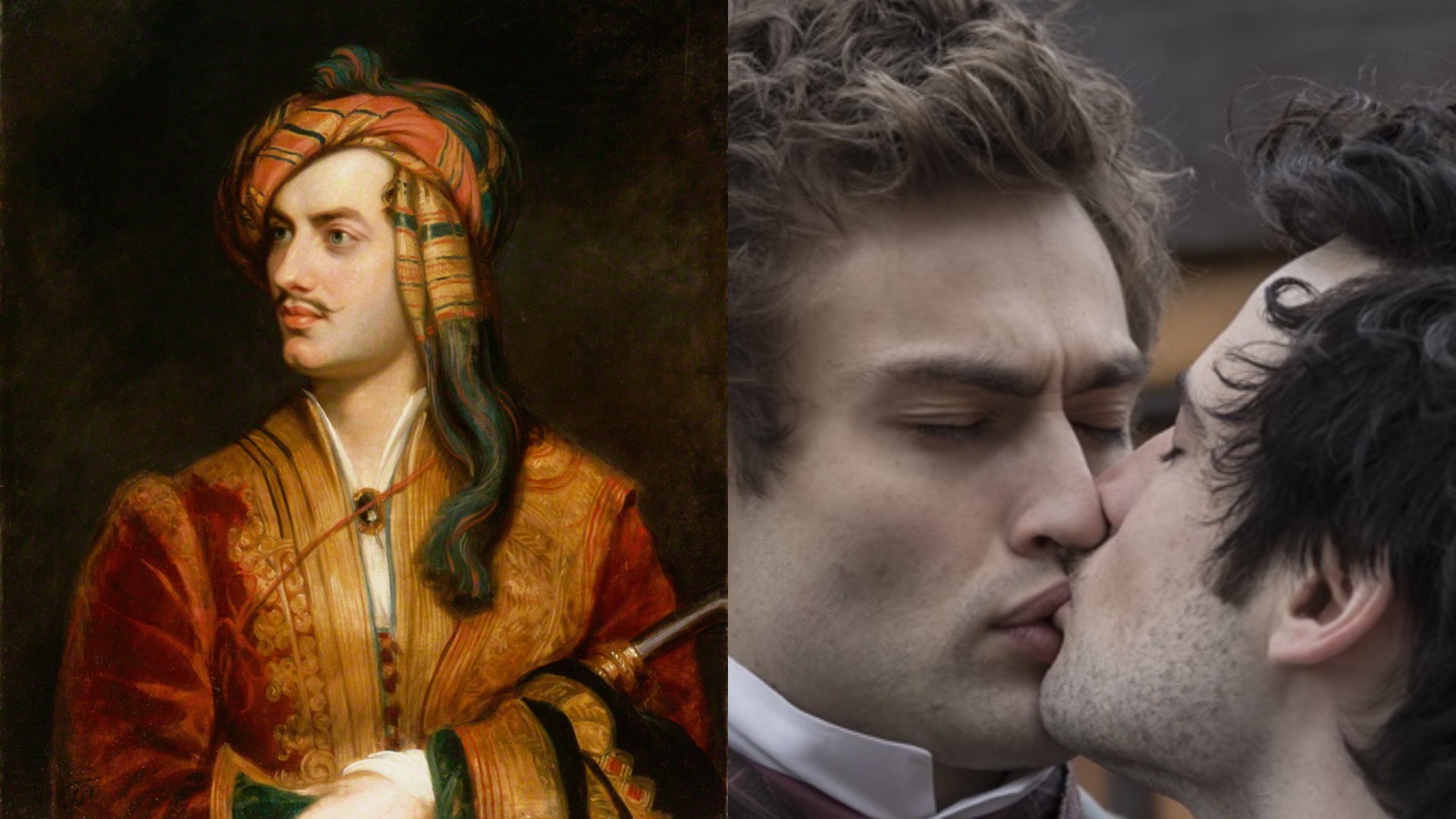‘Androgynous good looks and reckless sexuality’: Why ‘queer’ is better than ‘gay’ when discussing Byron’s sexuality
In his new biography of the Romantic poet Lord Byron, William Kuhn weighs what words to use to describe a man whose experience of same-sex sexuality was intermittent, but lifelong
By William Kuhn

In this extract from his new biography of the Romantic poet Lord Byron, William Kuhn weighs what words to use to describe a man whose experience of same-sex sexuality was intermittent, but lifelong. Kuhn also examines the censorship that for two hundred years has affected Byron’s reputation, as well as the first tentative steps Byron took as a 15-year-old to describe his love for other teenaged boys.
Byron has been a gay icon for more than two centuries. His openness about his experience of same-sex sexuality has long given other gay men encouragement, especially in times when gay love has been legally forbidden. This started while Byron was still alive. A rumor about Byron’s sexuality drove him into exile in 1816. His executors suppressed evidence of Byron’s love for Loukas Chalandritsanos just after Byron died in Greece in 1824. An anonymous poem Don Leon, modelled on Byron’s own Don Juan, circulated only a few decades later that openly discussed Byron’s male lovers. Byron’s work inspired many notable writers who came after him, including Benjamin Disraeli, Herman Melville, Henry James, Max Beerbohm, Harold Nicolson, W. H. Auden, and Tennessee Williams. All of them were interested in homoerotic themes and all of them aimed to follow Byron’s example.
Byron’s reputation for androgynous good looks and reckless sexuality is alive today. Jonny Lee Miller, Rupert Everett, Hugh Grant, and Tom Sturridge have all played Byron in recent films. David Bowie and Leonard Cohen wrote Byron tributes in music. Tom Stoppard’s most famous play Arcadia explores Byron’s legacy, both during his life, and among rival academics squabbling about him after his death.
I’m gay and grew up reluctant to admit it. Even though I learned to experience my sexuality as a pleasure rather than pain or embarrassment, I’m ready to move on to a new word. My book is different from other Byron books in its attempt to evaluate whether queer is better to use than gay when thinking about Byron’s sexuality. Queer takes in more people than gay. It includes persons who may not identify with either gender, who consider themselves non-binary, who live outside of conventions surrounding partnership and marriage. Contemporaries perceived Byron as effeminate, and he tried to embrace this in his work. It was also in the unusual clothes he wore and in the portraits he sat for, including one by Phillips of Byron in Albanian dress, which referred to contemporary belief that in Albania male-male sexuality was commonplace. Byron had an enduring hostility to what he considered restrictive social rules that has its counterpart in queer people’s social defiance today. So, if I feel some personal identification with Byron, it’s because I admire him as someone who dared to be different in how he loved and how he looked in his own day.
Although Byron’s experience of same-sex sexuality has been known about for a long time, there are still distinguished academics in the UK publishing books about him as if this weren’t true and even if it were, it doesn’t matter. When this is combined with active book banning going on in the USA, often targeted at books for, by, and about queer people, it begins to represent a resurgence of the campaign against queer people that should have long been laid to rest in a modern, civilized society. That is my justification for examining the evidence for Byron’s queer sexuality, mostly in his own words, and for connecting it with major themes in his work such as his melancholia, his secretiveness, his rage against social convention. Byron’s greatness lay in his being able to transform his queerness into moving, beautiful language. Sometimes he could be very funny about it too. He experienced personal transfiguration in his work that helped him rise above attacks on him. In a passage that shows him commanding an unusual metaphor, he claimed that what he wrote would eventually be able to soften “hearts all rocky now.” He believed that people would come to regret how harshly they’d judged him while he lived.
Byron’s work has often been censored. Byron censored it himself when he decided he’d gone too far in depicting a sexual romance between young men. In later life he changed pronouns, as in his Thyrza poems, which were written about the death of a young man he loved, but which he pretended were written about a girl. After his death Byron’s friends burned his memoirs, and members of his daughter’s Lovelace family also burned his manuscripts. All this was meant to conceal elements of his love life that were either homosexual, or unconventional, or in one case incestuous. If revealed that would have surrounded a major literary figure in scandal, though Byron was always hinting at the scandal himself in his verse.
Even as a teen, Byron was already exploring varieties of romance that it was dangerous to express. This may have been what made him gloomy in a verse where he thought he could only be united with a boy he loved in the grave. “I’ll make my last, cold pillow on thy breast; that breast where oft in life, I’ve laid my head.” But the comic Byron usually reasserted himself. When he crushed on the inky-fingered teen sitting next to him in class, Byron used a light-hearted exaggeration. He decided his friend was like Jupiter, king of the gods. “Equal to Jove that youth must be—greater than Jove he seems to me.”
William Kuhn is the author of Swimming with Lord Byron available now as an ebook, and (March 2024) in hardcover. His previous books include a gay biography of Benjamin Disraeli The Politics of Pleasure, and one of Jacqueline Kennedy Onassis Reading Jackie.
